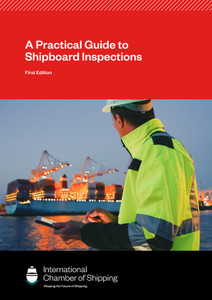
The primary aim of this book is to advise seafarers in general, and the officers and crew of merchant ships in particular, how best to deal with people encountered at sea as stowaways, migrants (including refugees) and the victims of trafficking. In each case, details of the Master's responsibilities and the required procedures are set out, along with preventative measures, appropriate preparation and the recommended response in stowaway and rescue at sea situations. Practical guidance is provided, focused on saving lives at sea and maintaining ship security and the safety of all on board.
Current trends and regions of higher risk are identified, with reference to the latest industry guidance and regulatory framework.
Although stowaways, trafficked individuals, refugees and other migrants may fall into distinct categories requiring different treatment, once on board a ship they are all essentially unauthorised people who present some common security risks, as well as specific challenges and responsibilities. These aspects are covered in the book, as well as noting circumstances in which the categories overlap.
The characteristics of the different groups are examined with reference to regional trends and current statistics. Case studies for stowaways and migrants from around the world are included. Detailed guidance is provided on the Master?s responsibilities and appropriate responses for seafarers at all stages in handling the different scenarios, including the duty to assist those in distress at sea and preventative measures against stowaway activity. The role of merchant shipping in migrant rescue, alongside the authorities and other organisations involved, is fully discussed, particularly in the context of the Mediterranean region. Migrant activity in the English Channel is also covered, with procedural guidance provided.
The planning and preparation required to deal effectively with stowaways and large scale rescue at sea is outlined, including reference to ship security plans, security roles and the necessary crew training.
Key points are summarised throughout the text and wherever possible graphic illustration used to convey information in a more interesting and easily accessible manner.
Annexes provide relevant extracts and summaries of the legal framework, regulations and guidance, along with useful checklists and forms.
The primary purpose of this book is to assist seafarers in general, and the officers and crew of merchant ships in particular, to understand their responsibilities with regard to stowaways, and distressed people in small boats, and particularly the very large numbers of people in distress in small boats seen in recent years.
It provides practical guidance as to what they can do to avoid or mitigate difficult situations associated with these people when encountered at sea and provides background on migrants (including refugees) and the victims of trafficking at sea. It may also be of interest to other groups involved, such as rescue NGOs, shipowners, P&I Clubs and various regulatory authorities.
People on board ships at sea who are not authorised passengers or part of the crew can be a challenge for seafarers, but one that cannot always be avoided. Unauthorised personnel have the potential to put a ship?s security and safety at risk, even if that is not their intention. Individuals and groups encountered at sea may require medical help, and they may be frightened and extremely vulnerable. Sometimes they may be aggressive and in rare cases, violent. Their behaviour can be unpredictable while on board, particularly if they feel threatened. They may rely completely on the ship and its crew for their survival, and this puts a burden of responsibility on seafarers.
Overview of Sections
1.1 Irregular Movement of People at Sea
1.2 Stowaways
1.3 Group Migration, Including Refugees
1.4 Human Trafficking at Sea
1.5 The Regulatory Framework
Section 2 - Stowaways
2.1 Stowaway Characteristics
2.1.1 Definitions
2.1.2 Statistics and Trends
2.1.3 Becoming a Stowaway
2.1.4 Stowaway Origins
2.1.5 Areas of Higher Risk
2.2 Security Plans, Procedures and Roles
2.2.1 Ship Security Plans (SSP) and Procedures
2.2.2 Port Facility Security Procedures
2.2.3 Designated Security Roles
2.2.4 Ship Security Training
2.3 Preventing Access
2.3.1 Selection of Ships by Stowaways
2.3.2 Identifying Access Points
2.3.3 Ship Security Measures - Controlling Access
2.3.4 Ship Security Measures - External Checks
2.3.5 Port Facility Protection Measures
2.4 Ship Searches
2.4.1 Different Types of Search
2.4.2 Planning and Carrying Out a Full Search
2.4.3 Area and Cargo Searches
2.4.4 Stowaway Hiding Places on Specific Ship Types
2.5 Managing Stowaways
2.5.1 Searching a Stowaway
2.5.2 Methods for Physically Searching and Safely Moving Stowaways and Other Unauthorised People
2.5.3 Reporting Responsibilities - Questioning Stowaways and Gathering Evidence
2.5.4 Dealing with Violence or Aggression
2.5.5 The Correct Treatment of Stowaways
2.6 Disembarking Stowaways
2.6.1 Stowaways Seeking Asylum as Refugees
2.6.2 Diversion from Route to Disembark Stowaways
2.7 Costs Associated with Stowaways
2.7.1 Responsibility for Paying Stowaway Costs
2.8 Case Studies
2.8.1 'Ken Wave'
2.8.2 'Chise Bulker'
2.8.3 'Nave Andromeda'
2.8.4 'Champion Pula'
Section 3 - Migrants, Refugees and Human Trafficking at Sea
3.1 Migration and Refugees - a Global Phenomenon
3.1.1 Migrant Smugglers and their Operation
3.2 Common Migration Routes by Sea
3.2.1 The Mediterranean Sea (Africa/Türkiye/Middle East to Europe)
3.2.2 The English Channel (France/Belgium to the UK)
3.2.3 Asia to Australia (and its Territories)
3.2.4 Bangladesh and Myanmar to Indonesia and Malaysia (Rohingya)
3.2.5 Mexico, Central America and the Caribbean to the USA
3.2.6 Other Migrant Routes
3.3 Human Trafficking at Sea
3.3.1 The Victims and the Traffickers
3.3.2 Types of Exploitation
3.3.3 Action Against Human Trafficking
3.4 The Merchant Shipping Response
3.4.1 Encountering Migrants at Sea
3.4.2 Reporting and Rescue of English Channel Migrants: Recommended Approach for Seafarers
3.4.3 Responding to Human Trafficking at Sea
3.4.4 Current Issues and New Developments
3.4.5 Disembarkation Difficulties
3.5 Case Studies
3.5.1 'Calajunco M'
3.5.2 Migrant Vessel Capsize off Pylos, Greece
3.5.3 'BSG Bahamas? and ?Berlin Express'
3.5.4 'Svanic'
3.5.5 'Maersk Etienne'
3.5.6 'Maersk Prosper'
Section 4 - Rescue at Sea
4.1 Rescue Roles and Responsibilities
4.1.1 The Master?s Responsibilities
4.1.2 Rescue Coordination Centres (RCCs)
4.1.3 Rescue Organisations
4.2 Planning and Preparation for Rescue
4.2.1 Search and Rescue Planning
4.2.2 Plans and Procedures for Recovery of Persons from the Water
4.2.3 Preparation On Board Ship for Rescue Operations
4.3 Rescue Guidance and Training
4.3.1 Rescue Guidance
4.3.2 Search and Rescue Training
4.3.3 Search and Rescue Drills and Exercises
4.4 Common Risks of Unauthorised People on Board
4.4.1 Security of the Ship
4.4.2 Poor Hygiene and Infection Risk
4.4.3 Requirement for Emergency Medical Attention
4.4.4 Risk of Violence - Safety of Crew
4.4.5 Possible Delays and/or Deviation from Planned Route
Annexes
Annex A - Forms and Checklists
Annex B - Legal Instruments, Regulations and Guidance
Summary Table of Main Responsibilities Under Selected Regulatory Measures Relevant to Stowaways, Refugees and Trafficked People at Sea
Annex C - Selected European Union Operations Concerned with Irregular Migration Across the Mediterranean Sea
Annex D - References and Further Reading
International Chamber of Shipping
The International Chamber of Shipping (ICS) is the principal international trade association for the shipping industry, representing shipowners and operators in all sectors and trades. ICS membership comprises national shipowners' associations in Asia, Europe and the Americas whose member shipping companies operate over 80% of the world's merchant tonnage.
Established in 1921, ICS is concerned with all technical, legal, employment affairs and policy issues that may affect international shipping.
ICS represents shipowners with the various intergovernmental regulatory bodies that impact on shipping, including the International Maritime Organization.
ICS also develops best practices and guidance, including a wide range of publications and free resources that are used by ship operators globally.
https://www.ics-shipping.org/about-ics/
Witherbys
Witherbys titles are developed using scripts developed by technical experts that are peer reviewed within work groups. Typically, they seek to improve understanding of the regulations, recommendations and guidelines issued by Industry.
Witherbys staff have significant expertise in the fields of navigation and hazardous cargoes as well as in the presentation of complex subjects in a graphic and easy to understand manner.
- Number of Pages:
- 198
- Published Date:
- October 2024
- Book Height:
- 305 mm
- Book Width:
- 220 mm
- Publication Date:
- October 2024
- Author:
International Chamber of Shipping and Witherbys
- Weight:
- 1.5 kg
- ISBN:
- 1914993842
- Preview:
- Yes






